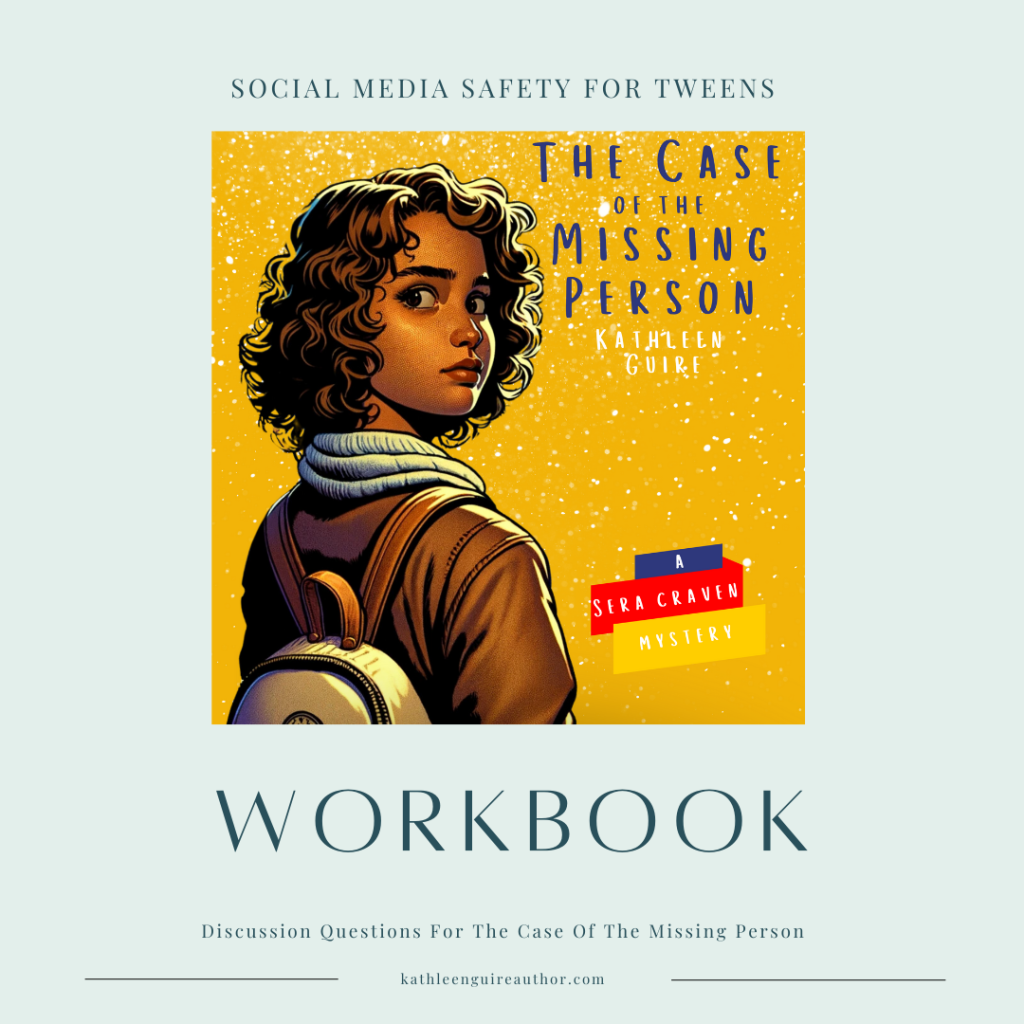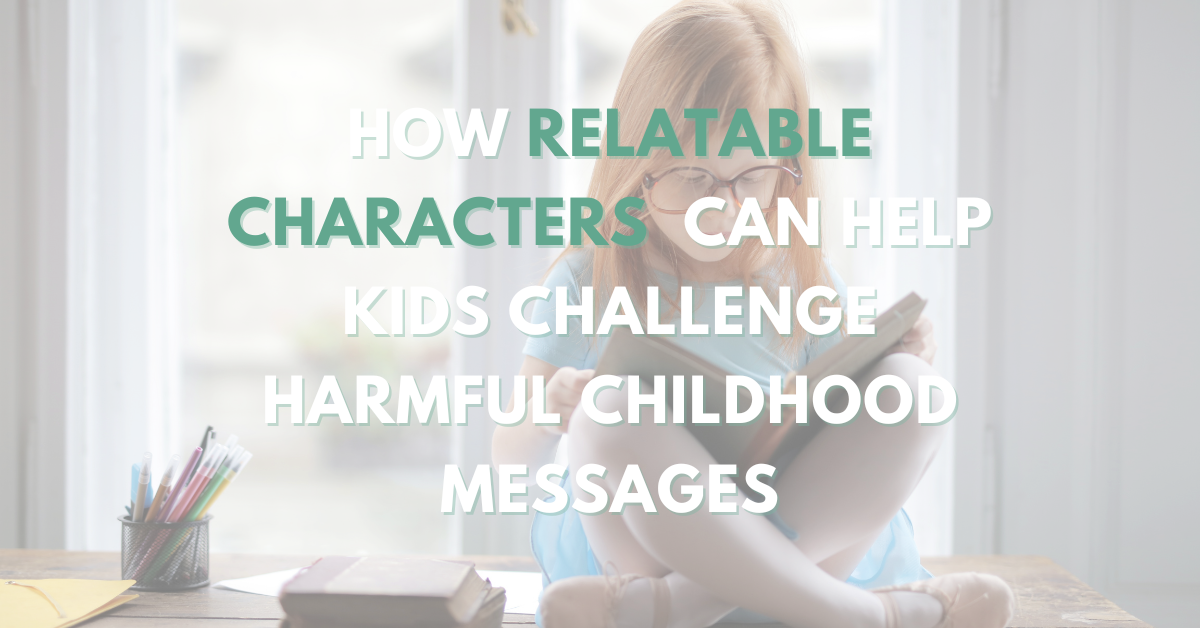Rewriting the Script: How Relatable Characters Can Help Kids Challenge Harmful Childhood Messages
Our kids are constantly absorbing messages—sometimes subtle, sometimes loud—about who they are, what they’re capable of, and how the world works. These childhood messages shape their self-image and worldview, for better or for worse. From the media they consume to their experiences with family, friends, and school, kids pick up beliefs that can stay with them for a lifetime.
But what happens when these messages are false or damaging? How do we help our children identify and unlearn harmful beliefs? One powerful tool for change lies in the stories they read and the characters they connect with. Relatable, well-rounded characters in fiction can offer a mirror, reflecting the struggles our kids may face, while also offering new, healthier ways of thinking and feeling. These characters provide examples of resilience, courage, and self-acceptance that can help guide children through the process of reframing false messages.
In this article, we’ll explore why childhood messages matter, how they impact our kids, and three ways relatable characters can help challenge and reshape these narratives.
What Concerns You as a Parent?
- Helping Your Child Overcome Negative Self-Perceptions: You want to support your child in recognizing and unlearning harmful beliefs that damage their confidence.
- Guiding Your Child Toward Resilience and Self-Worth: You’re looking for effective ways to instill resilience, self-acceptance, and a strong sense of self in your child.
- Finding Positive Influences Through Media: You’re searching for books, stories, or characters that offer positive examples to counteract damaging messages from other sources.
childhood messages and fictional characters
Have you ever stopped to wonder why certain characters resonate with us so deeply? Whether it’s the awkward but brave Harry Potter or the determined and resilient Katniss Everdeen, relatable characters draw us in because they reflect our own journeys. At the heart of these characters are the messages they carry—messages often shaped by their upbringing and the stories they heard as children.
The truth is, our childhood messages stay with us. The things we were told, the books we read, and the way our parents or caregivers responded to our experiences shape how we see ourselves and the world. It’s essential to understand these messages because they are the foundation for who we become as adults—and the same is true for our children.
- Empowering Your Child to Identify and Replace Harmful Messages: I’ll guide you in using relatable characters to help your child challenge and reframe the negative messages they’ve internalized.
- Building Emotional Strength and Self-Confidence: Through the examples set by well-rounded characters, your child will learn valuable lessons in resilience, courage, and self-acceptance.
- Equipping Your Child for Lifelong Success: You’ll discover practical strategies that can help your child process these harmful messages now and build a foundation of confidence and emotional strength for the future.
Why Should You Care About Childhood Messages?
- They Shape Self-Perception: The way we talk to our kids or how they see themselves reflected in stories will influence their self-esteem. Messages about their worth, abilities, and how they compare to others will stay with them.
- They Impact Future Relationships: Children who hear positive, supportive messages are more likely to have healthy relationships. Conversely, harmful messages can create issues with trust, communication, and self-worth in adulthood.
- They Influence Decision-Making: Children internalize the messages they receive and often use them as a guide for making choices later in life. Whether it’s about taking risks, trying new things, or how they handle failure, those early messages set the tone for how they navigate life’s challenges.
Childhood Messages in Context
Let’s look at three common types of childhood messages and how they play out:
- “You’re not good enough.” Children who hear this message, either directly or through subtle cues, can grow up feeling inferior or as though they have to prove their worth. In my life, I’ve seen how important it is to counter these messages with affirmation and encouragement. When my kids faced challenges, I was mindful of how I responded. Instead of focusing on failure, I would highlight their effort, reminding them they were always enough, no matter the outcome. In The Case of the Missing Skeleton, Sera grapples with feelings of inadequacy. Adopted at age 11, she battles with identity issues, wondering if she truly belongs. She constantly seeks external validation through her clue-gathering obsession, a habit she developed as a way of proving her worth. By the end, it’s not the clues but her relationships that help her see she’s already enough.
- “Be strong, don’t cry.” Many children receive messages that vulnerability is weakness. They learn to suppress their emotions, which can lead to difficulty expressing themselves in adulthood. I’ve seen this in my family, particularly when navigating neurodiverse challenges. Emotional regulation can be tricky, but teaching kids it’s okay to feel deeply—whether joy, sadness, or frustration—creates emotional intelligence and resilience.
- “You must be perfect.” The pressure to be perfect, often ingrained in childhood, leads to anxiety, fear of failure, and burnout. I’ve worked to create space in my family for mistakes. When we’re out kayaking or hiking, things don’t always go smoothly. I’m not mechanically inclined, but I’ve learned that attaching our kayaks together with a ratchet strap doesn’t have to be perfect to keep us safe. This lesson of “good enough” rather than perfect is one I emphasize with my kids and grandkids.

Grab a free workbook!
Social Media Safety for Tweens
Six Tips for Social Media Safety based on the tween mystery novel –The Case of The Missing Person.
A non confrontational approach to teaching social media safety.
3 Tips for Helping Your Child Process Childhood Messages
- Encourage Open Dialogue
Talk with your child about the stories they hear and how they perceive themselves in those stories. Ask them, “What do you think the character was feeling?” or “Why do you think they made that decision?” This not only helps them process the messages but also teaches empathy and critical thinking. - Affirm Their Value Beyond Achievements
It’s important to remind children that their worth isn’t tied to their accomplishments. Make a habit of praising effort, kindness, and curiosity, rather than just results. This helps them understand that they don’t need to be perfect to be loved. - Model Self-Compassion
Children learn how to treat themselves by watching us. If you make a mistake, be open about it and show self-compassion. For example, if I fumble with the kayak straps or misjudge a situation, I don’t hide it. Instead, I laugh it off and show my grandkids that it’s okay to be imperfect.
Key Takeaways
- Relatable Characters Reflect Us: Characters like Sera from The Case of the Missing Skeleton resonate because they embody our struggles, our desires, and our growth. They show us that it’s okay to be imperfect, to feel different, and to rise above it all.
- Childhood Messages Matter: The messages our children absorb today—whether through their real-world experiences or the characters they read about—will shape their tomorrow. That’s why it’s essential to be intentional about the stories we tell them and the values we instill.
- You Can Shape Their Inner Dialogue: By engaging in open conversations, modeling self-compassion, and focusing on effort over perfection, you can help your children build a healthy, resilient inner voice that will guide them throughout their lives.
How This Approach Will Help Your Child
The next time you read a story with your child or watch a movie, consider the messages the characters are sending. Ask your child what they think and engage in a conversation about how those messages reflect their own experiences. You might be surprised at how much your child has already internalized—and how much you can influence their worldview for the better.
other resources:
Finding Yourself in Fiction: Why Relatable Characters Matter
Three Tips For Finding The Perfect Clean Read for Tweens/Teens
Four Clean Thriller Myths Every Reader Needs to Know
pin it:


